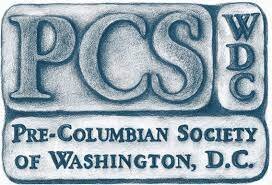The Context of Hieroglyphic Monuments at the Later Classic Maya Court of La Corona by Maxime Lamoureux-St-Hilaire, PhD candidate, Tulane University. TONIGHT'S MEETING WILL BE HELD AS PLANNED. THE SUMNER SCHOOL IS OPEN.
This meeting will be held at the Charles Sumner School, 17th & M Streets, N.W., Washington, D.C.
The meeting starts with refreshments at 6:45 pm and the lecture begins at 7:15 pm
The study of Classic Maya civilization is now historical archaeology. Ideologically-rich texts from media such as carved monuments and painted vases contain fascinating data that have become crucial in broadening our understanding of the Classic Maya. Yet, the study of the content of texts consistently takes precedence over the study of their context. Reading these ideological texts at face value can easily lead to biased views of Classic Maya society and political history. By critically analyzing context, we may better understand the political roles of textual artifacts, or the motivations behind their use and display.
This paper adopts an archaeological perspective to several hieroglyphic monuments found in distinct contexts in the regal palace of La Corona, Guatemala. Some monuments were found in situ inside prominent buildings, others in the backrest of exterior benches, while others came from a looted hieroglyphic staircase. Interestingly, this assemblage of hieroglyphic monuments – all displayed contemporaneously – was comprised of pieces crafted centuries apart. The resulting dialogue between archaeological and epigraphic data addresses changing strategies of royal sovereignty, shifts in political regimes, and the collapse of Classic Maya divine kingship.
Maxime Lamoureux-St-Hilaire currently is a PhD candidate in anthropology at Tulane University and a Junior Research Fellow at the Dumbarton Oaks. His dissertation research focuses on the political institution of the Classic Maya royal court. Mr. Lamoureux-St-Hilaire investigates this topic by excavating the regal palace of La Corona in Guatemala and by researching the comparative literature. He has excavated and surveyed in Guatemala, Belize, Mexico, Honduras, and Québec, Canada.

